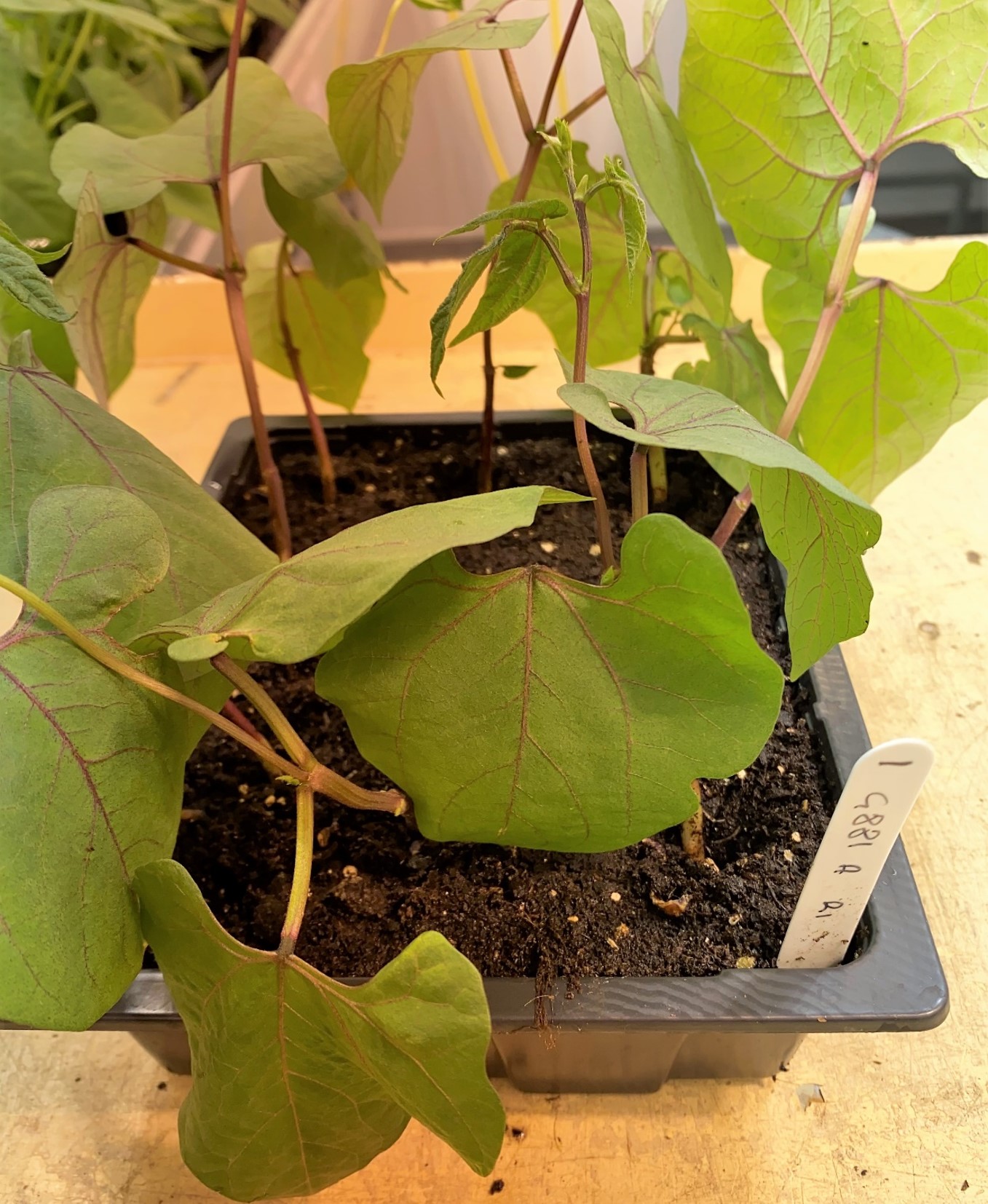The latest project news, images, videos and updates on characterising hybrid beans
Research update - February 2022
Information and images from the Rhizoctonia root rot disease screening programme
Research update - November 2020
Browse our selection of images of our research or follow the slideshow below
The CIAT team in Tenerife, Colombia continue to produce seed for the project. Activities include pollination, spraying, pruning, cleaning, harvesting and delivering the seeds to CIAT headquarters in Palmira where they are checked for seed quality and health before being shipped to NIAB at Cambridge, UK.
Research update - October 2020
Browse our selection of images of our research or follow the slideshow below
The team in Cambridge have been screening some of the hybrid materials and their parents for their response to sclerotinia, a soil-borne fungus commonly known as white mould. The test is performed on detached leaves which are tested with different strains of sclerotinia to see how the disease progresses and compared with plants which are known to have some resistance to white mould.
Research update - July 2020
Browse our selection of images of our research or follow the slideshow below
The hybrid complexes and their parents are still growing in Tenerife, Colombia with the local CIAT team working hard to care for the plants and continue to harvest seed while under quarantine due to covid-19. In Cambridge, UK the hybrids are growing well under greenhouse conditions and even the wild parent P. parvilfolius has produced pods. Screening the plants for their response to sclerotinia (white mold) is also underway.
February 2020 visit to CIAT's Tenerife Station in Colombia
Browse our selection of images of our research or follow the slideshow below
The visit allowed the NIAB team (Sarah Dyer, Jane Thomas and Tom Wood) to study hybrid beans being grown in one of CIAT’s experimental stations where special adaptations have been made to the mesh houses to ensure the valuable bean plants flower and produce enough seed for evaluating traits of interest. The CIAT team, led by Marcela Santaella and Peter Wenzl, are taking measurements to describe how the plants grow and the health and viability of the seeds are thoroughly checked before the beans are shipped to Cambridge in the UK.
Research update - December 2019
Browse our selection of images of our research or follow the slideshow below
Due to the difficulties in crossing distantly related plant species, the NIAB team will perform crosses to cultivated beans to get a picture of how easy these plants are to work with for plant breeders, and explore the genomes of the hybrid beans to understand how the different parental genomes combined together to produce these hybrids. When the beans arrive in Cambridge they will be grown in greenhouse conditions to mimic their natural environment and be assessed for their responses to a set of fungal diseases. Characteristics associated with drought tolerance will also be measured.
August 2018 visit to CIAT's Carrizal Station in Colombia
Browse our selection of images of our research or follow the slideshow below

